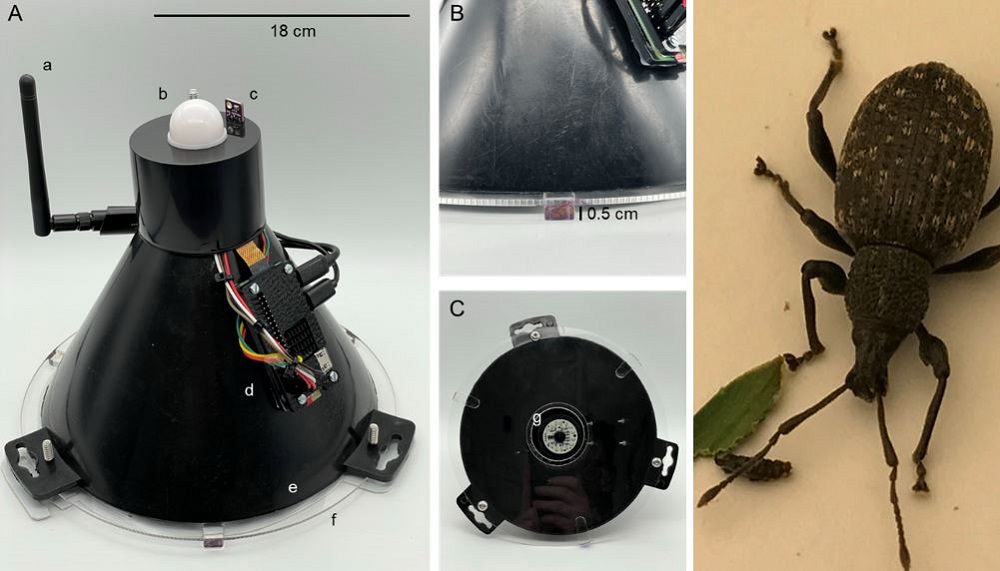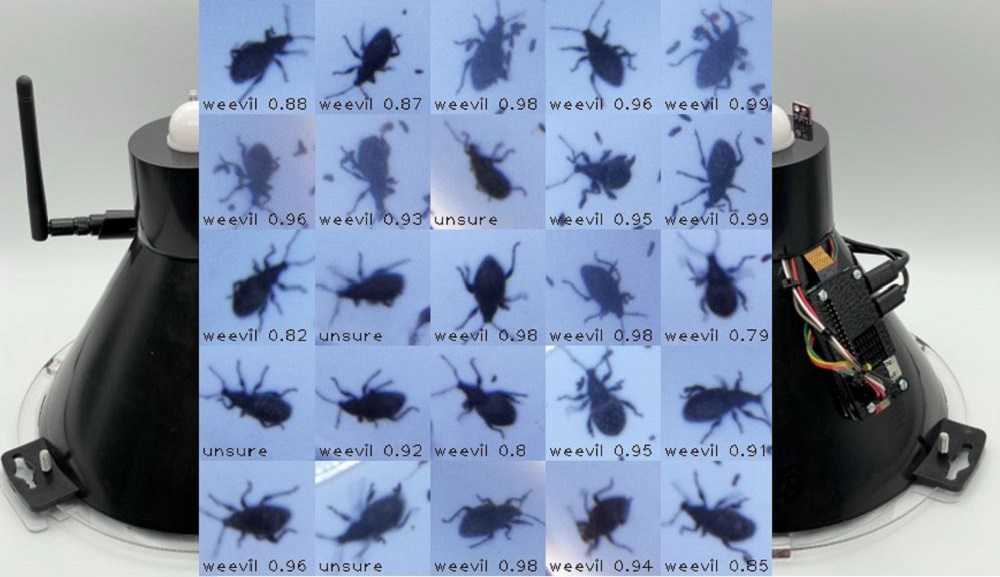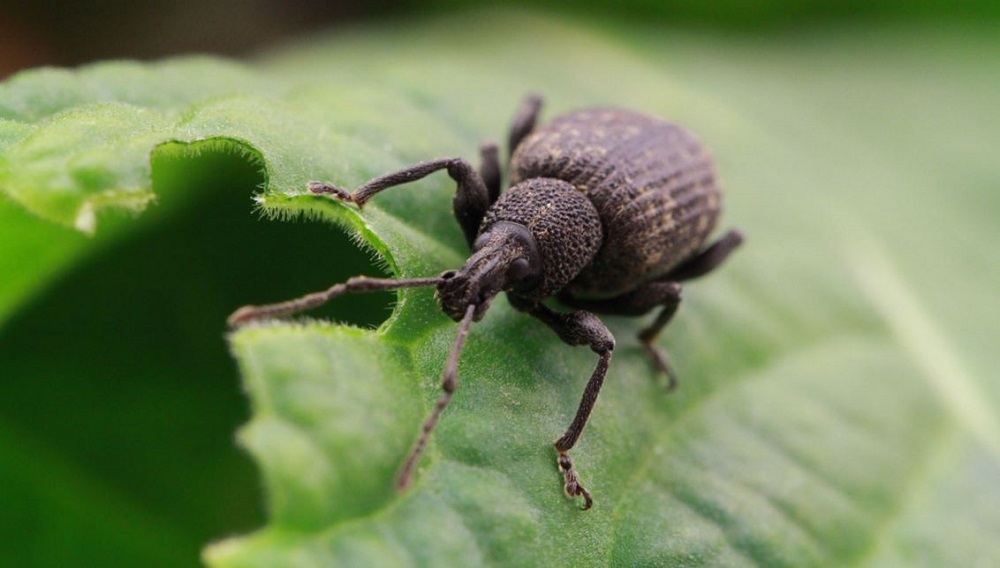The smart pest monitoring tool with ‘eyes’ and a ‘brain’
Wednesday, 8 June 2022
Researchers have trained a tool to recognise a beetle pest of crops, even at night. This article explores the development a smart solution to a problem as old as agriculture itself.
Find out more about the smart pest tool
What’s the problem?
The project, led by Joe Roberts at Harper Adams University, set out to tackle an Achilles heel associated with the control of a particular group of pests – the nocturnal ones that scutter about when humans like to rest.
Such night-time movements mean that pests can fly (crawl or wriggle) under the radar. By escaping detection, they are freer to inflict yield and quality losses on crops. Growers often only become aware of the presence of damaging pest populations after it is too late to avoid significant economic losses.
Numerous crop pest species are active at night, including the notorious cabbage stem flea beetle in oilseed rape and (black) vine weevil in horticultural (especially soft fruit and ornamental) crops.
With options reducing for broad-spectrum synthetic insecticides, some of the control slack needs to be picked up by products with a biological nature – such as entomopathogenic nematodes and fungi to target soil-dwelling pest larvae (where available).
However, such IPM-friendly options need to be targeted carefully, with effective pest monitoring strategies essential for optimum management. It is why a 24//7 automated monitoring solution would come in handy.
The science of ‘smart’
The science of automated pest monitoring is in its infancy. With any foray into new technology, the start of the path is often fraught with issues. Certainly, initial attempts spawned a first generation of largely unreliable and difficult-to-use prototypes.
With a track record of investment in precision solutions for agriculture and horticulture, the team at Harper Adams University was well placed to create a tool that was effective and low-cost.
Partly due to its status as a global horticultural pest, the team used adult vine weevil beetles to develop a prototype tool. With proof of concept established, it would be relatively easy to adapt the tool to monitor some other pest species.
Monitoring adult beetles is key because they are relatively easy to see. Generally, beetle larvae feed out of sight – with vine weevil larvae adopting a subterranean lifestyle and cabbage stem flea beetle larvae feeding inside the foliage.
At the heart of the tool is a commercially available traditional pitfall trap (Figure 1), which lures in and traps vine weevil beetles.
.JPG) Harper Adams University
Harper Adams University
Figure 1. An unmodified vine weevil trap – Chemtica, Costa Rica. (A) Assembled for in-field use, with beetle entry location identified by (a), and (B) with the top removed to show the inside.
The team modified the trap to provide easier access for beetles and primed it to be ‘smart’ (Figure 2) by installing a relatively low-cost ‘brain’ (onboard computer) and ‘eyes’ (camera and light-ring).
It was not ‘born smart’, however. The team needed to train it to recognise what it was seeing. They used the tool to take 1499 images. Of these, 1,300 contained at least one adult vine weevil and 199 contained at least one earwig (to act as a negative control).
 Harper Adams University
Harper Adams University
Figure 2. A vine weevil trap modified with ‘smart’ features. (A) Assembled for in-field deployment with (a) Wi-Fi antenna, (b) BH1750FVI lux light sensor, (c) BME280 temperature/humidity sensor, (d) Raspberry Pi Zero 2W computer, (e) clear acrylic and (f) entry location. (B) Close-up of entry location and 0.5 cm stand-offs and (C) internal view of the (g) LED light-ring and camera.
Project results
Following training, the smart monitoring tool reliably identified the presence of adult vine weevil in laboratory and semi-field environments, with 85% accuracy in the laboratory tests (Figure 3). The retrofitted components were found not to negatively affect the beetle-trapping operation of the original trap.
 Harper Adams University
Harper Adams University
Figure 3. A representative montage of 25 images captured by the ‘smart’ monitoring tool along with their classification (weevil = vine weevil) and the model confidence in this classification (1 = highly confident).
Due to the movement of beetles within traps, the smart trap is unable to count insect numbers – it only confirms that at least one individual is present.
Although it requires further development before it is ready for commercialisation, this work provided the first report of such technologies being specifically developed for vine weevil management. Ultimately, it is hoped that a refined tool will calculate pest populations and let growers know when control is required.
AHDB/BBSRC net-zero partnership
This project was part of an AHDB/BBSRC partnership that aimed to support the agricultural transition to net zero.
Project costs were met through BBSRC’s Farm Sustainability Fund. The partnership supported ten projects that addressed priorities identified by farmers, including ways to cut greenhouse gas emissions and increase carbon storage.
 Harper Adams University
Harper Adams University

